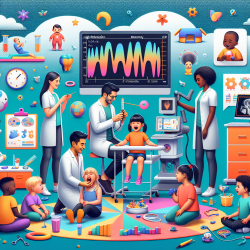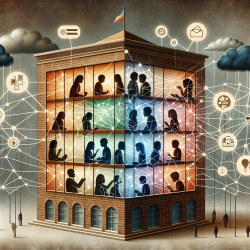Introduction
In the evolving landscape of healthcare, the integration and standardization of electronic health record (EHR) data have become pivotal. The research article "Developing a scalable FHIR-based clinical data normalization pipeline for standardizing and integrating unstructured and structured electronic health record data" sheds light on the transformative potential of the FHIR-based NLP2FHIR pipeline. This blog explores how practitioners can leverage these insights to enhance their practice and contribute to improved outcomes for children.
Understanding the FHIR-Based NLP2FHIR Pipeline
The NLP2FHIR pipeline is a groundbreaking tool designed to standardize unstructured EHR data using the HL7 Fast Healthcare Interoperability Resources (FHIR) specification. By integrating structured data and normalizing content, this pipeline facilitates seamless data interoperability, enabling large-scale data analytics and EHR-driven phenotyping.
The pipeline comprises three core modules:
- Core NLP Engine: Utilizes existing NLP tools to extract clinical entities and standardize them using FHIR resources.
- Integration of Structured Data: Complements NLP outputs by integrating structured data from EHRs.
- Content Normalization: Ensures that resource content adheres to FHIR specifications, enhancing semantic interoperability.
Implications for Practitioners
For practitioners, the adoption of the NLP2FHIR pipeline offers several advantages:
- Enhanced Data Interoperability: By standardizing EHR data, practitioners can access comprehensive patient information, facilitating informed decision-making and personalized care.
- Improved Data Analytics: The pipeline's ability to integrate and normalize data supports advanced analytics, enabling practitioners to identify trends and patterns that can inform treatment strategies.
- Streamlined Research and Collaboration: Standardized data models promote data sharing and collaboration across institutions, accelerating research and innovation in pediatric care.
Encouraging Further Research
While the NLP2FHIR pipeline presents significant advancements, ongoing research is essential to address existing challenges and enhance its applicability. Practitioners are encouraged to engage in research efforts that focus on:
- Expanding FHIR Extensions: Developing additional FHIR extensions to capture more nuanced clinical data.
- Improving NLP Tool Integration: Enhancing the integration of diverse NLP tools to improve data extraction accuracy.
- Refining Content Normalization: Addressing semantic gaps and enhancing terminology binding to ensure data consistency.
Conclusion
The NLP2FHIR pipeline represents a significant step forward in the standardization and integration of EHR data. By adopting this tool, practitioners can enhance their practice, contribute to improved patient outcomes, and drive innovation in pediatric care. To delve deeper into the research and explore the full potential of the NLP2FHIR pipeline, practitioners are encouraged to read the original research paper.
To read the original research paper, please follow this link: Developing a scalable FHIR-based clinical data normalization pipeline for standardizing and integrating unstructured and structured electronic health record data.










